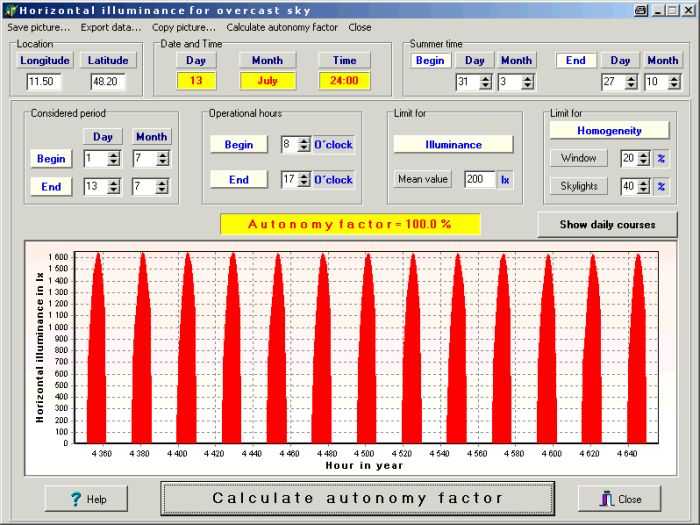Daylight
Daylight is a program, which calculates and graphically displays the
distribution of daylight in an arbitrarily squared room for every moment in
time:
- Daylight factor and illuminance with an overcast sky according to the German
Standard DIN 5034,
- Sun path and the visibility of the sky,
for rooms with windows and skylights.
The aim of daylight design for rooms is to avoid poor daylight distributions
right from the beginning of planning. Already in an early design stage of the
planning process it has to be assured that rooms are adequately supplied with
daylight, meaning that a minimum daylight factor has to be reached e.g. according
to the German standard DIN 5034.
Daylight provides architects and engineers with a practicable tool for
physically correct daylight calculations.
Features:
- Easy to use,
- includes rooms with windows and skylights,
- instantaneous evaluation of the daylight situation in rooms ,
- variation of room parameters.
Quick guide:
1. Step:
The following window appears after the program is started:
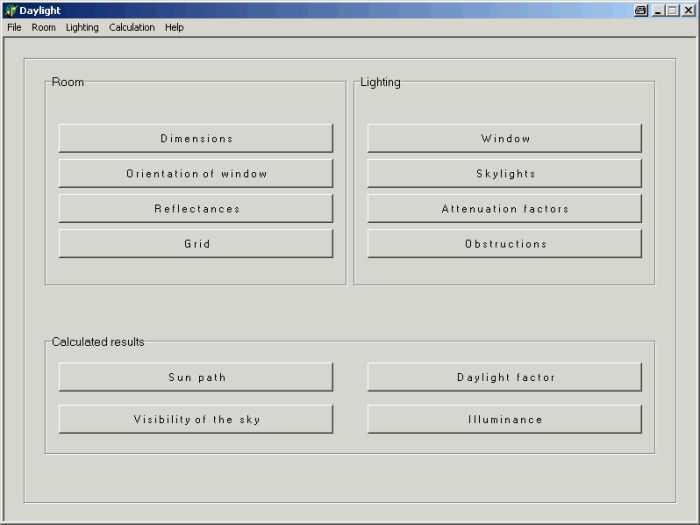
Within the topic "room" the following parameters can be modified:
- Room geometry (width, depth, height),
- Reflection factors (ceiling, wall, floor),
- Raster (distance and number of grid points).
Within the topic "lighting" the following parameters can be modified:
- Window geometry (width, height, height of balustrade, distances),
- Skylight geometry (distance, dimensions),
- Attenuation factors according to the German standards DIN 5034 und 5036,
- Surrounding buildings (height, distance).
Within the topic "calculated results" the following values can be
calculated and graphically displayed:
- Sun path and the visibility of the sky,
- Daylight factor and illuminance with overcast skies according to the German
standard DIN 5034.
2. Step:

3. Step:
Daylight factor with overcast sky:
- Calculation of the daylight factors for designated locations in the room.
- Calculation of the required parameters (D min, D max, regularity factor)
for the evaluation of the daylight distribution according to the standards.
- Displaying of results as tables and 2-dimensional or 3-dimensional graphics,
which can be copied afterwards to the clipboard or stored on a drive. Furthermore,
it is possible to export these data.
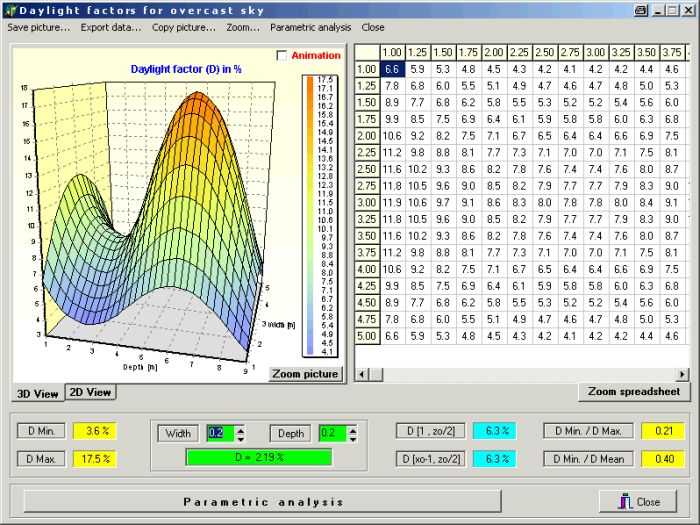
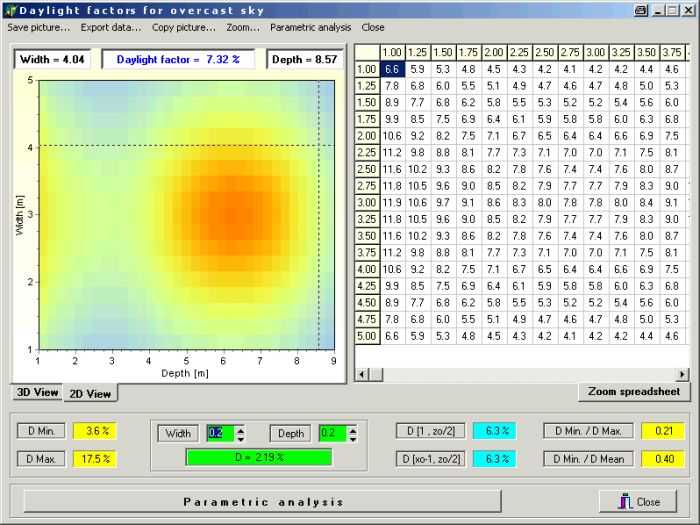
4. Step:
The influence of the room parameters on the daylight factor can be analyzed.
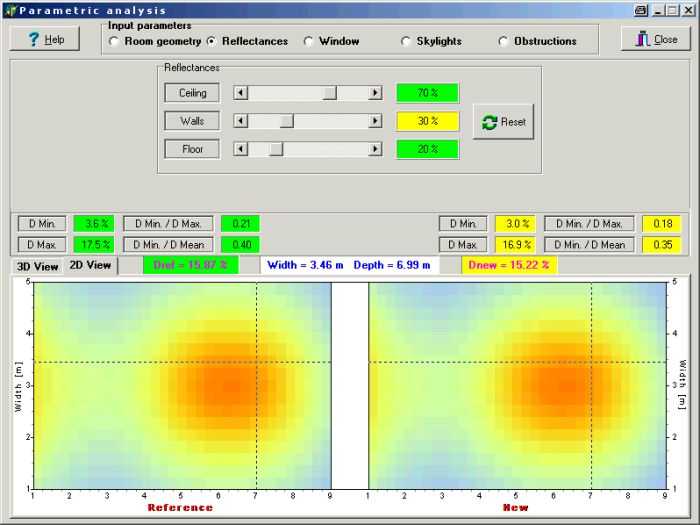
5. Step:
Illuminance during overcast skies:
- Calculation of the daylight factors for designated locations in the room.
- Calculation of the required parameters (Ei min, Ei max, regularity factor)
for the evaluation of the illuminance in the room according to the standards.
- Displaying of the results as tables and 2-dimensional or 3-dimensional graphics,
which then can be copied to the clipboard or stored on a drive. The geographical
location, date, time and summertime can be adjusted.
- Furthermore, data can be to exported and the daily graph of the illuminance
can be viewed.

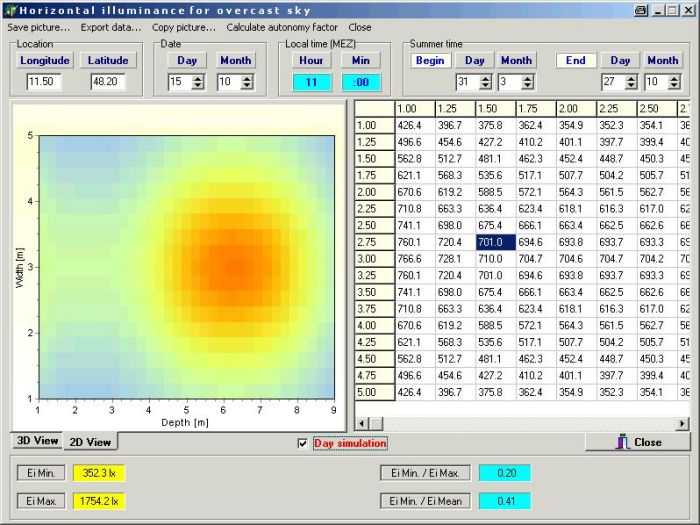
6. Step:
The autonomy factor for individual evaluation periods, time of the day, limits
of the illuminance and regularity can be calculated.
Autonomy factor (AF):
That fraction of time (during the operational hours) where the illuminance
exceeds the desired level and where the postulated degree of homogenity
is fullfilled.
Degree of homogenity (H):
| Window (in vertical walls): |
Hw = Emin / Emax |
| Skylight (roof): |
Hs = Emin / Emean |
| typically: |
Hw  0.17 0.17 |
| |
Hs  0.50 0.50 |
